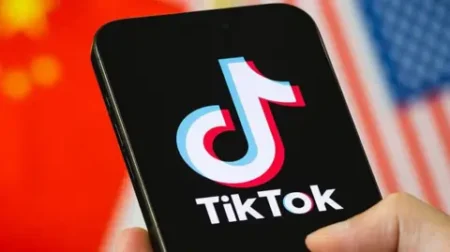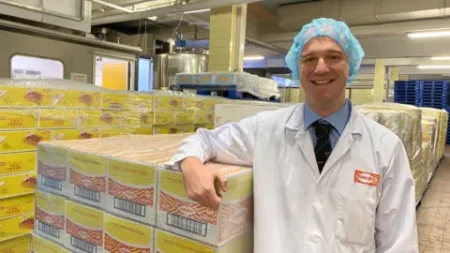**The Perils of Trump’s Semiconductor Strategy: Challenges in Competing with Asia**
In a rapidly evolving technological landscape, the issue of semiconductor manufacturing remains pivotal, especially in the context of U.S. efforts to regain its footing in the chip industry. The narrative regarding this production sector gained prominence when Gina Raimondo, the U.S. Commerce Secretary at the time, articulated in 2021 that the United States had “dropped the ball” on chip manufacturing. This resulted in a substantial technological gap allowing nations like China and other Asian countries to surge ahead in semiconductor production.
Fast forward to 2025, the competition for dominance in chip manufacturing illustrates a fierce battleground between the U.S. and China, exacerbated by U.S. President Donald Trump’s strategic approach to bolster domestic production. Nevertheless, this endeavor poses significant challenges; the intricacies involved in manufacturing these high-precision microprocessors represent a complex endeavor that has taken several countries decades to perfect. Trump’s assertions that a tariff policy would stimulate job growth may overlook the pressing issue of U.S. manufacturers grappling with skilled labor shortages and the inferior quality of production capabilities in local factories.
The central query becomes: what concrete actions will Trump introduce that differ from past efforts, especially as countries like Taiwan have perfected the art of producing high-caliber chips? It begs the question whether the U.S. can indeed scale up its semiconductor production effectively in this highly competitive environment.
**The Complexity of Semiconductor Manufacturing**
Semiconductors are integral to an array of modern technologies—from home appliances and smartphones to military aircraft and electric vehicles. These silicon wafers, or chips, were originally conceived in the United States; however, the current landscape shows that advanced semiconductor production is predominantly concentrated in Asia. The manufacturing process itself is not only financially demanding but also technologically sophisticated. For instance, an iPhone may feature chips designed in the U.S., yet sourced from Taiwan, Japan, or South Korea, utilizing raw materials predominantly mined in China before being assembled in Vietnam or China itself.
This intricate supply chain has been built over decades, establishing a deeply integrated ecosystem that Trump aims to disrupt through tariffs and localized manufacturing incentives. Specifically, he has threatened companies such as Taiwan Semiconductor Manufacturing Company (TSMC) with punitive tariffs should they fail to establish production facilities within U.S. borders. This approach raises concerns regarding the overall stability of the semiconductor industry, as constant policy shifts hinder companies’ ability to plan for sustained investment.
**Strategies and Competition in the Industry**
Significant subsidies leveraged by countries like China, Taiwan, Japan, and South Korea have propelled their semiconductor industries forward. This realization guided the creation of the U.S. Chips and Science Act under President Joe Biden in 2022, looking to rejuvenate domestic semiconductor production by offering financial incentives. However, the existing challenges remain; both TSMC and Samsung, two colossi in the semiconductor domain, have encountered hurdles such as rising costs, hiring difficulties, construction setbacks, and labor union opposition.
For instance, while TSMC announced a massive investment in U.S. facilities, a notable portion of its advanced manufacturing continues to rely on Taiwan. Analysts highlight that the urgency to build cutting-edge fabrication plants is compounded by a lack of skilled labor, exacerbated by Trump’s stringent immigration policies that limit the influx of talent from countries renowned for their expertise.
**Global Implications and Strategic Responses**
The broader implication of Trump’s tariffs on the semiconductor industry reverberates internationally. Countries such as Japan, which had aligned its economic revival strategy with semiconductors, may find their plans derailed under increased tariffs. Conversely, nations like India have exhibited a readiness to integrate into the semiconductor supply chain, albeit faced with challenges related to infrastructure and resource availability.
In this multifaceted battle for chipset supremacy, chip manufacturers are not entirely cornered by tariffs. Companies like Apple, Microsoft, and Cisco can exert influence on policy through lobbying efforts, underscoring the interconnectedness of the semiconductor market and the reliance of manufacturers on U.S. chip production capabilities.
In conclusion, while Trump’s strategy aims to fortify the U.S. semiconductor industry amid the escalating competition with Asia, the challenge remains monumental. The reliance on a collaborative, globalized approach shaped the current semiconductor ecosystem, and attempts to insulate the U.S. from this reality could complicate matters further. The profound questions of agility, investment, and progress loom large while the global supply chain remains intricately tied to Asia’s advances in semiconductor technology. The complexities of modern chip production put into perspective how synthesizing the U.S. semiconductor ambitions will require time, effort, and, inevitably, cooperation beyond mere protectionism.











